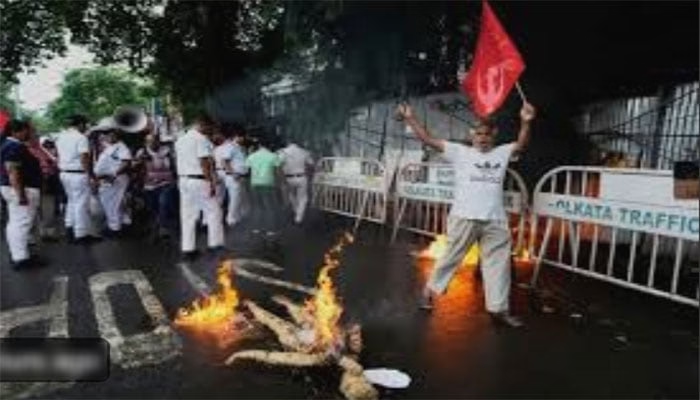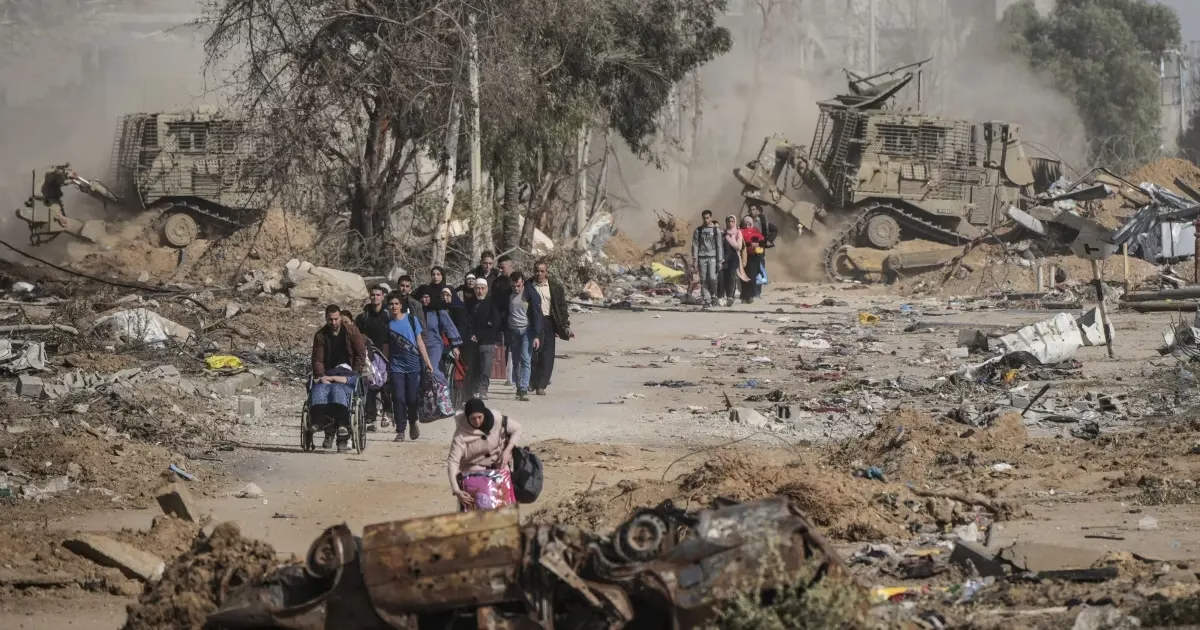India witnessed one of the largest strikes in its history as more than 250 million workers and farmers joined a nationwide protest against what they call the Modi government’s anti-labor and anti-farmer policies. The strike, spearheaded by 10 major labor organizations, has disrupted life across several major cities, paralyzing public transport and sending a strong message of discontent to the central government.
The nationwide industrial action began early in the morning and spread rapidly across states, including key metropolitan centers like Delhi, Kolkata, Chennai, and Bengaluru. Public transportation services came to a standstill, railway stations were deserted, and markets in many regions remained shuttered.
Widespread Disruption Across India
In many urban areas, the strike severely affected daily life. Buses remained off the roads, railway services were halted in parts of the country, and traffic congestion was reported where protesters blocked main roads. Demonstrators gathered in large numbers, waving banners, chanting slogans, and calling on the government to address their longstanding demands.
Several incidents of unrest were reported, with police resorting to lathi charges (baton charges) in attempts to disperse crowds that blocked public transport and forcibly closed shops. In some regions, protesters clashed with law enforcement officers, further intensifying the strike’s impact.
Labor Demands: Better Wages, Employment and Rights
The participating labor unions and farmer organizations have laid out a broad list of demands. Chief among them is the call to end rampant unemployment, which they argue has worsened under the Modi government. They are also pushing for higher minimum wages, improved social security for workers, and the withdrawal of labor reforms that they say have weakened protections for industrial and agricultural workers.
Additionally, the striking groups have denounced recent policies seen as favoring large corporations at the expense of small farmers and workers. The labor bodies say the central government is failing to safeguard the interests of millions of daily wage earners, contract workers, and those in the informal economy.
Farmers Join Forces With Workers
This protest is particularly significant as it brings together both labor unions and farmer organizations — two sectors that have been increasingly vocal in their opposition to government reforms. Farmers’ groups say that recent agricultural policies are exploitative and make them vulnerable to market fluctuations and corporate control.
The show of unity between urban laborers and rural farmers has added momentum to the strike, creating a powerful alliance that is difficult for the government to ignore.
Government Response and Next Steps
Indian government officials have stated that they are willing to engage in dialogue with the labor organizations to address their grievances. However, union leaders remain skeptical, pointing to what they describe as a consistent lack of action on previous promises.
Authorities are closely monitoring the situation, especially in areas where protests have turned aggressive. Security forces have been deployed in large numbers to maintain order and prevent escalation.
A Historic Moment of Resistance
With over 250 million participants, this strike is being called one of the largest in global history. It reflects widespread dissatisfaction among India’s working class and agricultural communities, who are feeling increasingly marginalized in the country’s economic narrative.
As the strike continues, labor leaders have warned that unless concrete steps are taken by the Modi government, protests could intensify in the coming weeks.
This massive shutdown serves not only as a form of resistance but also as a loud call for policy reform — one that may shape India’s political landscape in the months ahead.



